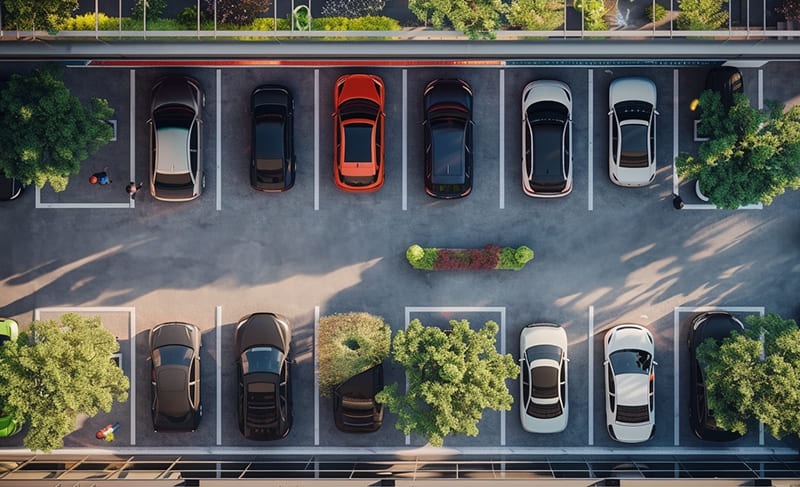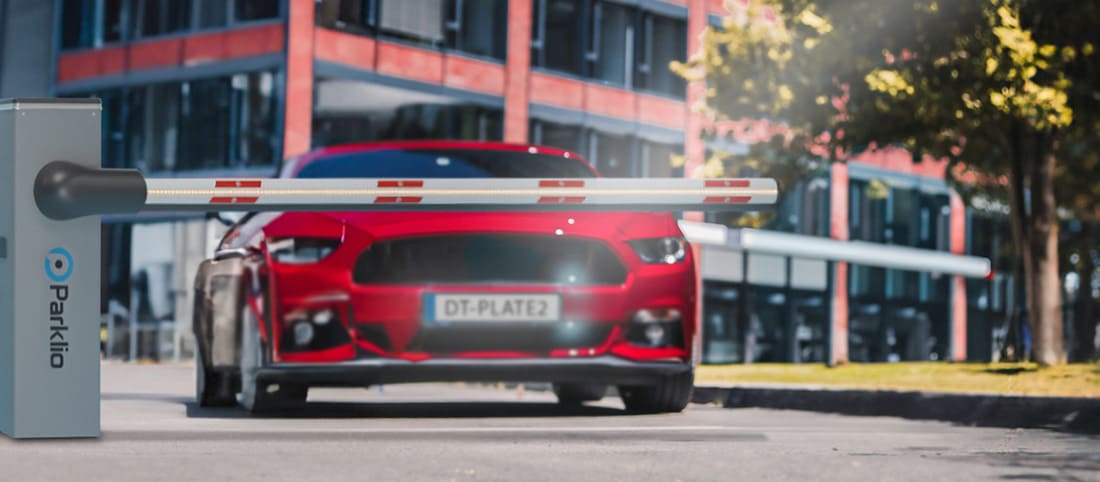Park Like a Pro|Master Different Types of Parking & Navigate Urban Parking Challenges with Ease

Finding a parking spot in the city can be quite a task, with its crowded streets and limited spaces. In this guide, we're going to simplify it for you. We'll walk you through the key techniques for different types of parking, whether it's parallel, perpendicular, or angled. Plus, we’ll look at how innovations like smart parking technology and parking barriers are making city parking smoother and more secure. If you want to improve the efficiency and convenience of your city driving, you're in the right place. Let's explore the skills and strategies needed to park easily in any urban setting.
Table of contents:
Master Parking Techniques
Mastering the art of maneuvering through different parking situations in the city requires a certain set of skills. There are three common types of urban parking: angled, perpendicular, and parallel parking. We'll break down these techniques step by step, offering practical advice to help you park smoothly and efficiently, no matter the situation.
Angled Parking
Angled parking is widely regarded as the easiest parking method to master due to its natural approach angle and excellent visibility. This method involves parking your vehicle at an angle of 45 to 60 degrees relative to the curb. Here's how to become proficient at it:
- Approach Correctly - Slow down and approach the space at the laid-out angle.
- Signal and Check - Indicate your intention to park by activating your turn signal, and then take a moment to check for any oncoming traffic or pedestrians.
- Steer In - Gently guide your car into the spot, paying close attention to your side mirrors to avoid contact with adjacent vehicles.
- Achieve Proper Alignment - Once your vehicle is within the parking space, make sure to straighten your wheels and position your car so that it's centered between the parking lines.
Angled parking is often preferred because of its simplicity for drivers and its space-saving advantages for city planners. This makes it a practical choice for parking on city streets.

Perpendicular parking
Perpendicular parking spaces are positioned at a 90-degree angle to the curb, and you'll frequently encounter them in parking lots and public garages. When parking perpendicularly, regardless of whether you approach from the left or right side, the key steps include:
- Select a Spot - Find a spot that fits your vehicle comfortably, allowing easy maneuvering.
- Signal and Align - Indicate your intention to park, slow down, and align your vehicle parallel to the parked cars in a way that your front bumper is even with the side of the vehicle next to the vacant space.
- Check Surroundings - Before making the turn, ensure safety by checking mirrors and blind spots for pedestrians and other vehicles.
- Maneuver In - Turn the steering wheel all the way towards the vacant space while proceeding in.
- Adjust and Center - When you're near 50 centimeters of the curb, come to a complete stop and double-check that your car is correctly positioned in the parking area. Straighten your wheels and park your car in the center of the area, with equal space on either side, to prevent other drivers from banging their doors into yours or having difficulty exiting their cars.

Parallel Parking
Parallel parking requires parking your vehicle parallel to the road, aligning it with other parked cars. It is perceived as the most difficult, but with practice, it can be mastered:
- Find the Right Spot - Begin by searching for a parking space that is approximately one and a half times the length of your car.
- Position Next to Another Car - Once you've identified the spot, align your vehicle next to the car parked immediately before the open space, ensuring that your rear bumper is in line with theirs.
- Reverse and Execute the Turn - Carefully reverse your vehicle while consistently checking your mirrors, and then begin turning the steering wheel toward the curb as you gently back into the available parking space.
- Align Your Car - Continue reversing until your vehicle is parallel and properly centered within the parking space. Be prepared to make slight adjustments as necessary to achieve the desired alignment.
- Ensure Adequate Space - Make sure there's enough room for cars in front of and behind your vehicle to exit comfortably.
The ability to parallel park effectively isn't just about improving your driving skills; it's about making your city parking smoother and less stressful. With that in mind, we have further insights for you! We'll also introduce you to innovative parking technology and smart parking barriers that are already transforming parking in bustling urban areas, making it easier for you to find and secure your spot.

Know exactly where vacant parking spots are
Smart parking apps have started to change the way urban drivers find parking, offering up-to-the-minute data on available parking spaces. This means that you can now, with just a few taps on your smartphone, effortlessly locate the nearest empty parking space. But the technology doesn’t stop there – many of these apps also allow you to reserve a spot in advance. This is particularly useful during peak hours or when you're heading to a popular event where parking is scarce.
Now, you might be thinking – "This sounds fantastic, but is it available in my city? Well, chances are it is. Smart parking applications are fast spreading in cities throughout the globe, assisting drivers like you to save time, minimize stress, and make the most of your day.
For instance, cities like San Francisco, Berlin, and Tokyo are leading the way in smart parking technology. However, it's not just limited to these well-known metropolises. Smaller cities across the world are also catching up. So, how can you find out if your city has joined this smart parking revolution? A quick search in your smartphone's app store is a great start. Look for apps specifically designed for your city or region, and you'll soon have your answer.
However, while these solutions are transforming public parking, the significance of securing and protecting your private parking space in the city cannot be overstated. This brings us to an equally important aspect of urban parking – safeguarding your personal parking space.
Protect Your Private Parking Space
If you're fortunate enough to have your parking space in the city, you know how valuable it is. Yet, the frustration that comes when you find your space occupied by someone else can be overwhelming. So take control and protect your parking space with a simple yet effective solution - the parking barrier.
The market offers a wide range of options to suit different needs and budgets: from basic manual options to advanced smart barriers. These smart barriers, in particular, bring additional convenience with features such as remote operation via smartphone apps, integrating seamlessly with the digital solutions we've been discussing. Whether you opt for a simple manual barrier or a sophisticated smart one, you're taking a crucial step in ensuring your parking space remains just that – yours.
It's important to note, however, that the efficacy of this solution is not just in the choice but also in the execution. The right positioning of the barrier within your parking spot ensures it does not hinder your vehicle’s access when parking, so make sure you consult with a professional installer to determine the best placement that guarantees unobstructed access to your vehicle.
And if you've ever experienced the annoyance of someone blocking your driveway or access to your house, we have more valuable insights for you. In our blog "What Can I Do If Someone Blocks My Driveway?" we explore effective strategies to resolve such issues.
As we conclude this complete guide on parking like a pro, let’s reflect on the key takeaways and how they empower you as a driver in the bustling city environment.

Urban Parking Mastered
In conclusion, the urban parking landscape is evolving, and with it, the way we approach and manage our parking needs. From the streets of the busiest cities to the private driveways of our homes, the challenges of finding and protecting a parking spot require both skill and the right tools. By mastering different parking techniques, leveraging smart parking technologies, and utilizing protective measures like parking barriers, you can navigate these challenges with greater ease and confidence. We hope this blog has provided you with valuable insights and practical solutions to make your urban parking experience as smooth as possible.


